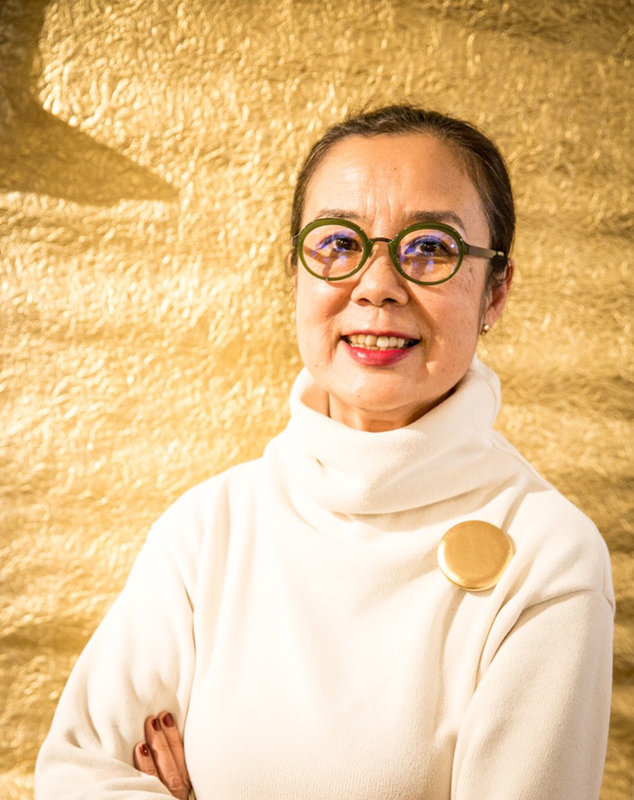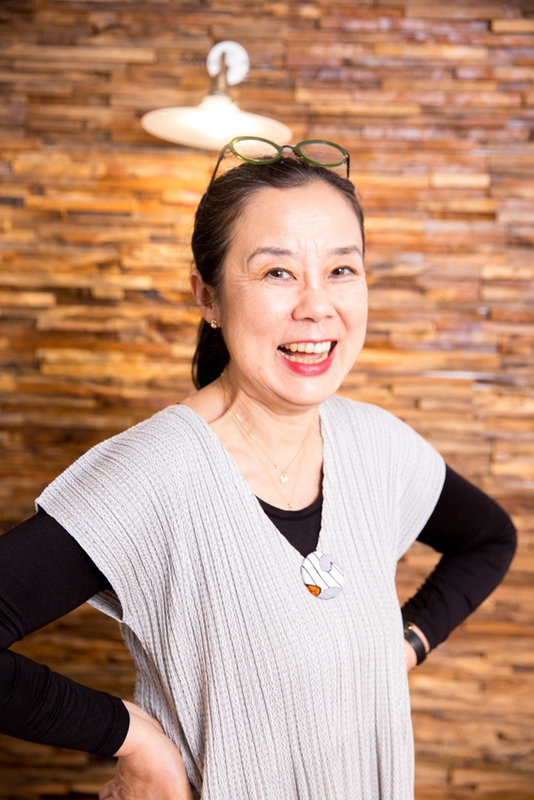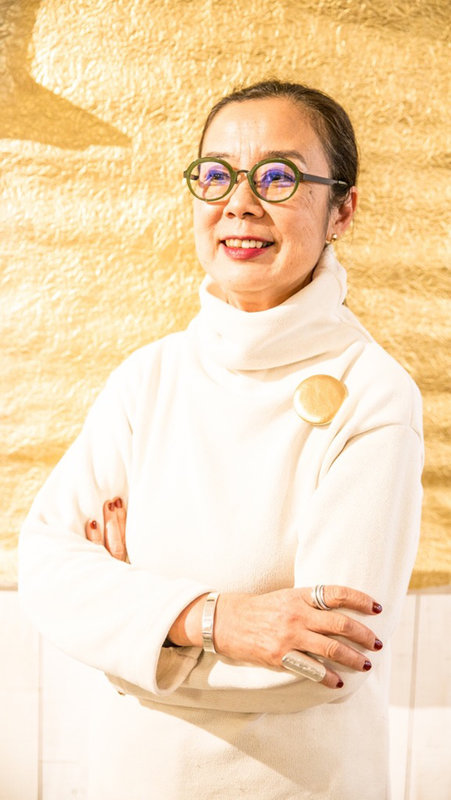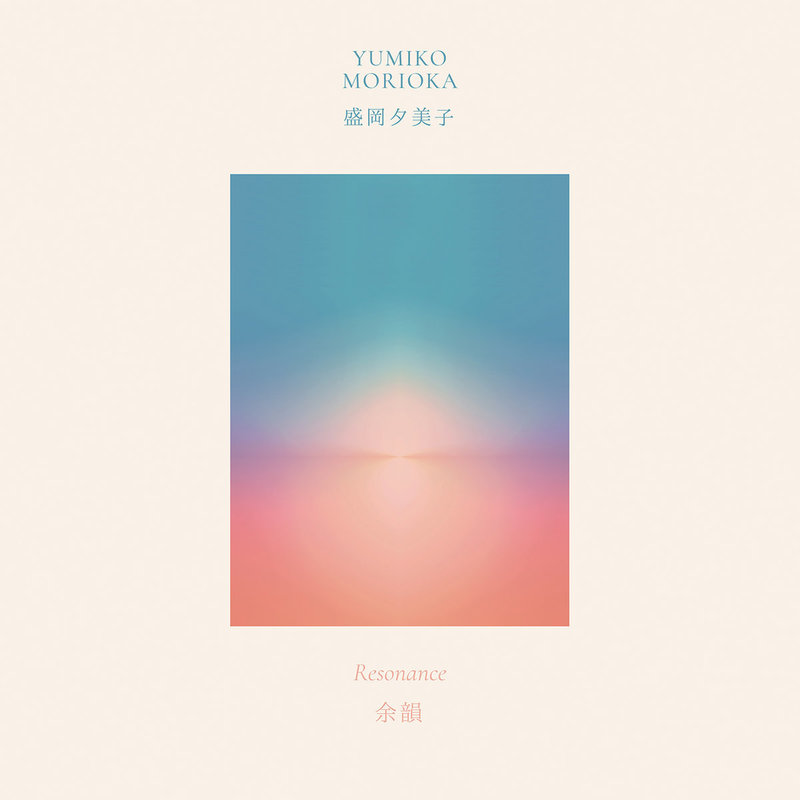
“Nothing is a coincidence,” says the Japanese pianist, composer, songwriter and chocolate maker Yumiko Morioka. Speaking from her home in Tokyo’s Setagaya ward, Morioka is reflecting on the reissue of her first and only album under the shadow of the COVID-19 pandemic. Recorded in 1987 for her close friend Akira Ito's Green & Water label, “Resonance” is a suite of ten beautiful piano improvisations in the tradition of early 20th-century composer Erik Satie’s musique d’ameublement (furniture music) - a style of background music played by live performers, which served as a precursor to minimalism, ambient music and kankyō ongaku (environmental music).
Fittingly, by way of piano melodies that feel transmitted from the dimension next door, natural field recordings, and gentle accompaniment on oboe and violin, “Resonance” sees Morioka tapping into a musical déjà vu - or perhaps déjà entendu - where these related ideas feel unified, profoundly calming and endlessly expansive. “People have told me my music has a soothing or calming effect, so I hope it helps some people with stress and anxiety,” she continues. “The power of music is amazing. Without music, I cannot live. It is like air, food or water. Music has saved my life; I can say that. It is like medicine to me.”
Morioka’s journey with music began in Tokyo in the late 1950s. As she tells it, her mother was a piano teacher. From age three, she was expected to practice daily, with the expectation she would become a great classical pianist. “I didn't know how to do anything else,” Morioka reflects. “At one point, I was practising for eight hours a day.”
“The power of music is amazing. Without music, I cannot live. It is like air, food or water. Music has saved my life; I can say that. It is like medicine to me.“
By her early teens, she’d won multiple piano competitions and scholarships; and 1971, she was invited to study in America. After spending several years at a boarding school in Maryland, Morioka went on to major in piano while studying under future Pulitzer Prize winner John Adams at the San Francisco Conservatory of Music from 1974 to 1978. “America was so different from Japan,” she recalls. “I was raised by my very strict parents. Suddenly, I came to America, and it was just after the hippy era. When I went to school in San Francisco, my apartment was in Haight-Ashbury, so it was one hundred and eighty degrees of difference. I started to explore smoking marijuana and LSD and everything. It was amazing.”
Morioka fell in love with rock music in her teens - The Beatles, Led Zeppelin, and Grand Funk Railroad, and at the conservatory, she discovered composition. “John Adams was the head of the composition department, and he had so many interesting workshops," she says. "He invited all these great composers. Aaron Copeland came, Terry Riley. It was so exciting.”
Through her studies, she was exposed to early computer music and minimalism. “They had this very fundamental synthesiser linked to the computer at the conservatory,” Morioka remembers. “It was all patched cords, the big old style. I was excited about the new electronic music, Steve Reich and all these people. The minimal music and all these things were happening. It was great.”
The popular countercultural music of the day, psychedelic bands like The Grateful Dead and Jefferson Airplane influenced her as well, but what really resonated was the progressive art-rock of Emerson, Lake & Palmer. “I was blown away by this album “Tarkus”, it was so cool. Then I fell in love with “Pictures At the Exhibition”. I'd never heard any rock musicians do classical music.”

By the time she graduated, Morioka had her heart set on a different path. “Instead of performing classical piano, I started to compose and improvise, and that is what I enjoyed,” she says. Afterwards, returned to Japan, but it was a rough re-entry. “I had such freedom in America with hippy and drug culture, and then I came back to my strict parents in Tokyo," Morioka recalls. After a series of arguments, she moved out of home and began working in a restaurant to support herself.
Morioka arrived back in Japan as Yellow Magic Orchestra’s sleek techno-pop sound was exploding in Tokyo. “I was very lucky because I was in that whole scene back then,” she recalls. “It was very interesting going out to the nightclubs every night back then.” Her friend Emiko was married to YMO drummer Yukihiro Takahashi at the time, and she befriended the great Haruomi Hosono and other members of the Alfa/Yen Records world including the city-pop singer Miharu Koshi. “Miharu Koshi is like my sister,” she laughs. “I talk to her almost every day.”
While she was working in the restaurant, a friend who was a record director remembered her skills and approached her about writing some songs for a new teenage pop performer - the Japanese idol singer Toshihiko Tahara. In 1980, she wrote Toshihiko' breakout single 'Aishu Deito (New York City Nights)' - a slice of aspirational, uptempo J-pop. "It became a million-seller hit and my life completely changed," she says.
The early '80s was Japan's economic bubble years, and Morioka made a lot of money out of pop songwriting. She thinks she wrote about fifty singles during that era. Morioka worked hard, but she had fun as well. Everything in moderation, even moderation. “I stopped working in the restaurant, and I did a lot of scuba diving. Every time I earned some money, I went diving for fun. I went everywhere, Indonesia, Okinawa, Australia, the Maldives, you name it," she remembers. It’s a perfect image isn’t it, churning out pop songs from 9-5, before heading overseas for underwater adventures.
Writing pop songs might have paid off financially, but she wasn’t making the music that was in her heart. Actually, Morioka wrote pop under a pen name to avoid causing her mother shame. “Oh my god, she almost died when she found out what I was doing,” she laughs. “She was so embarrassed because she thought I would be a classical music pianist and I was writing these TV pop songs for teenagers."

“I feel like I am a medium. Music comes through me as a filter.“
In the late 80s, Morioka moved to a little house on the idyllic Izu Peninsula, just south of Tokyo. She wasn’t enjoying working within the pop music landscape and found herself seeking refuge in the grandeur of nature. From that little house, she could see the sea and feel the ocean wind. Living there changed her. At the same time, she found herself burrowing deeper into British producer Brian Eno’s early ambient works.
“I was shocked when I heard Brian Eno’s Music for Airports for the first time,” she recalls. It was so different, and it broke all sorts of musical rules. It was a real ah-ha 'you can do this' moment for me. Even great music with a great melody and lyrics, if I listen to it too many times, I don't want to hear it anymore. But Brian Eno's ambient music is like air. It's just there, and I can play it all day long. It doesn't bother me. I wanted to do something like that with Resonance.”
Created for Green & Water at Akira Ito's request, "Resonance" emerged during Japan's kankyō ongaku era, when Akira, Hiroshi Yoshimura and their peers were building on Brian Eno's idea of ambient as “an atmosphere, a tint...designed to induce calm and space to think”. Morioka took similar cues with her album. Mostly improvised, the album was recorded on a beautiful old German Bösendorfer grand piano at a private residence. The kankyō ongaku years made for a multitude of quiet classics which have in recent times received a critical reassessment, and the delicate and tranquil soundworlds of “Resonance” richly deserve a special place within the canon.
Morioka hadn’t intended to make therapeutic music, but “Resonance” found favour in hospital maternity wards, healing shops, and nature documentaries. “It was just the music I wanted to make, but I didn't make any money doing it,” she laughs. “I just went into the recording and took what came out. I feel like I am a medium. Music comes through me as a filter. When I was writing pop music for money, sometimes it didn't come out, so I would listen to a lot of different records and take this part, that part, put them together and try to make a song because I had to write by a deadline. You never make a good song that way. When you are not trying, taking a hot bath or walking in the park, some phrase will come through you. Once you get the one major melody, the whole song comes so quickly and easily.”

“I think in my past lifetime I was making chocolate. Something about chocolate, I already know it.”
After "Resonance", Morioka met an American architect. In 1994, they moved to the US and raised a daughter, first in Charlottesville, Virginia, then later on Marin County, near San Francisco. In Charlottesville, music took a backseat while Morioka became a soccer mum and discovered a passion for chocolate making. She started out selling handmade, organic chocolates at the local farmers market, before taking a short trip to France to learn how to make ganache in the late ‘90s. “I think in my past lifetime I was making chocolate,” she muses. “Something about chocolate, I already know it.”
Two years ago, as a result of the 2017 Californian wildfires, Morioka returned to Tokyo and opened her chocolate shop Setagaya Truffle. "My house burned down in America," she recalls. "I lost everything, I ran away with my pyjamas on, and those were the pyjamas I hated the most. I was going to throw them away. Them, my computer and my business papers are the only possessions that survived. I lost my Green Card, my passport, my instruments, records, everything."
Despite losing almost all of her possessions, Morioka doesn't view it as a tragedy - in fact, far from it. "It was amazing," she says. "When you lose something, things come into your life. I learned so much from that fire experience. Everyone was so nice and helped me, and I was happy just to be alive." Morioka had always wanted to be a minimalist, but couldn't bring herself to throw things away, so when events forced her to become a minimalist, she embraced it and the feeling of lightness it has afforded her.
Something else significant that came into her life after the fire was Berlin's Métron Records offering to reissue "Resonance". Although she was very surprised, "I thought my album was dead, and no one listened to it," musically speaking, the experience has reinvigorated her, and she feels she may soon have new work to share with the world.
"Lately, I go to the piano, and I play whatever comes out, she says. "I've started to do this series called '64 Times'. I'm into sacred geometry, and 64 is a very sacred number. If you repeat something 64 times, that is like a human cell forming, and the heart starts to appear. So, I thought 64 is a cool number. I repeat this sequence 64 times, and I keep adding different sounds to it. I've been doing that for my pleasure and having fun. I might do something with that."
Resonance is out now in digital and LP formats through Métron Records (order here)


